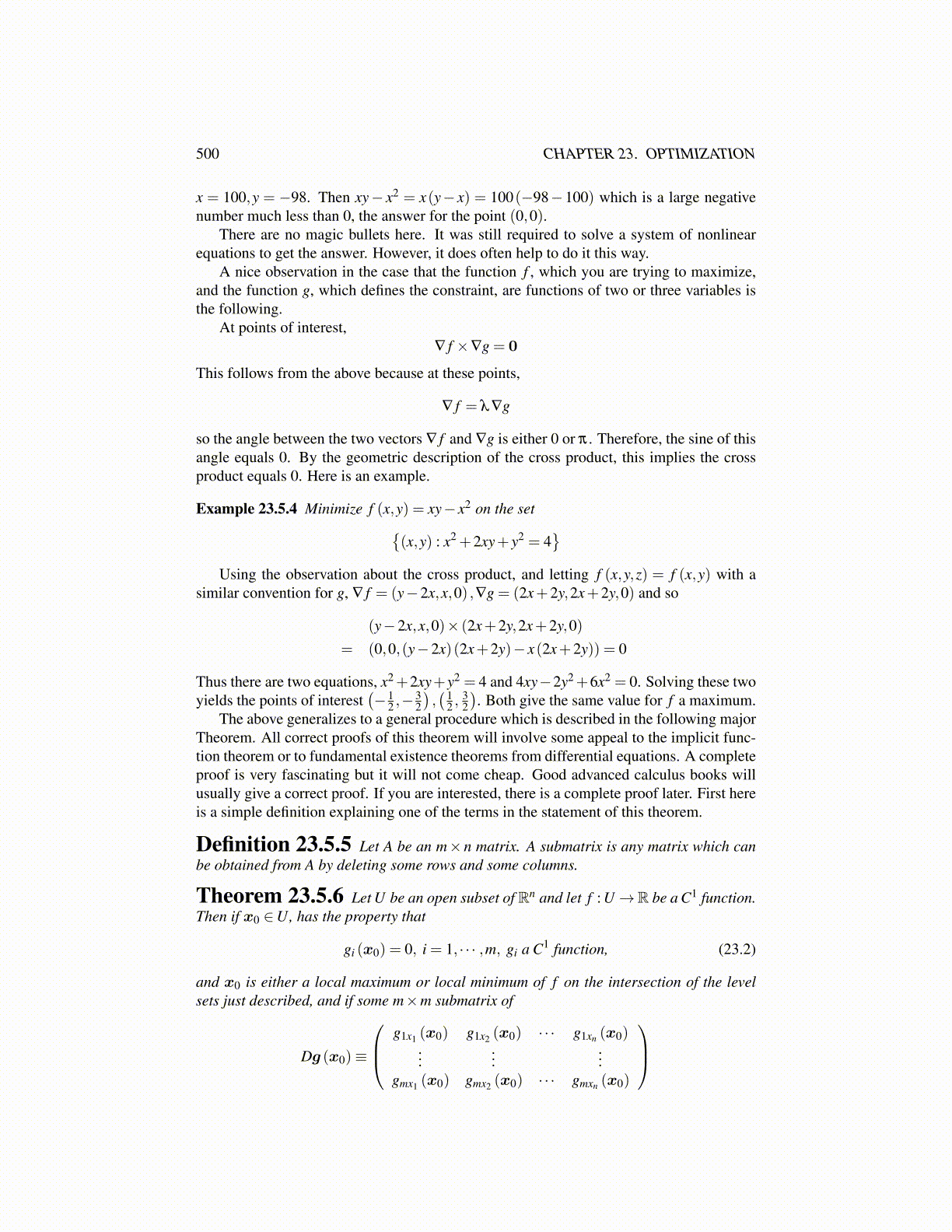
500 CHAPTER 23. OPTIMIZATION
y = 0 will not yield the minimum value from the above example. Therefore, divide the lastequation by y and solve for λ to get λ = (2/5)z. Now put this in the second equation toconclude
5y2 + z2 = 4y2 − (2/5)z2 = 0
,
a system which is easy to solve. Thus y2 = 8/15 and z2 = 4/3. Therefore, candidates for
minima are(
2√
815 ,√
815 ,±
√43
), and
(−2√
815 ,−
√815 ,±
√43
), a choice of 4 points to
check. Clearly the one which gives the smallest value is(2
√8
15,
√8
15,−√
43
)
or(−2√
815 ,−
√815 ,−
√43
)and the minimum value of the function subject to the con-
straints is − 25
√30− 2
3
√3.
You should rework this problem first solving the second easy constraint for x and thenproducing a simpler problem involving only the variables y and z.
23.6 Exercises1. Maximize x+ y+ z subject to the constraint x2 + y2 + z2 = 3.
2. Minimize 2x− y+ z subject to the constraint 2x2 + y2 + z2 = 36.
3. Minimize x+ 3y− z subject to the constraint 2x2 + y2 − 2z2 = 36 if possible. Notethere is no guaranty this function has either a maximum or a minimum. Determinewhether there exists a minimum also.
4. Find the dimensions of the largest rectangle which can be inscribed in a circle ofradius r.
5. Maximize 2x+ y subject to the condition that x2
4 + y2
9 ≤ 1.
6. Maximize x+2y subject to the condition that x2 + y2
9 ≤ 1.
7. Maximize x+ y subject to the condition that x2 + y2
9 + z2 ≤ 1.
8. Minimize x+ y+ z subject to the condition that x2 + y2
9 + z2 ≤ 1.
9. Find the points on y2x = 16 which are closest to (0,0).
10. Find the points on√
2y2x = 1 which are closest to (0,0).
11. Find points on xy = 4 farthest from (0,0) if any exist. If none exist, tell why. Whatdoes this say about the method of Lagrange multipliers?
12. A can is supposed to have a volume of 36π cubic centimeters. Find the dimensionsof the can which minimizes the surface area.